The Broadway Effect in Rocky, Aladdin, Les Miz
The musical Aladdin on Broadway has gotten rid of Abu, Aladdin’s trusted if mischievous monkey companion, as well as the pet tiger Rajah, both of whom were in Disney’s 1992 animated film. In Rocky on Broadway, you cannot see the real streets of Philadelphia, nor in Les Miserables on Broadway can you see the performers’ nostrils; both loomed large in the film versions.
About a third of the forty two new shows in the 2013-2014 Broadway season were either adapted from a movie or so closely associated with one that the film serves both to lure an audience into the musical, and to raise audience expectations—the former a godsend for the producers, the latter a terror for the creative team. How do you offer something both comforting and exciting, familiar and surprising; what can Broadway offer as compensation for the loss of Abu, Philadelphia and Hugh Jackman’s shapely nose?
The answer is what we can call The Broadway Effect, and now is a good time to consider it. March and April are always the most frenzied months for New York drama critics, with nearly half of the entire Broadway season’s openings crammed into the few short weeks before the deadline for Tony Award eligibility. Those of us lucky enough to be invited to this ritual hazing can’t help but detect trends in stagecraft among the parade of plays and musicals.
It doesn’t take a consistent theatergoer, though, to recognize what over the past few decades have entered the standard Broadway playbook of stage effects:
- Stage smoke/fog
- Confetti shot out of (on-stage or off-stage) cannons
- Banks of bright lights shining directly in the audience’s eyes
- Shimmering stars against a deep black night (I mean the celestial bodies, but of course celebrities are also now standard.)
- Weather (usually rain), accompanied by somber black umbrellas or loud crashing noises.
- Magically moving scenery (via computer automation)
- Video projections
It’s not just such stage special effects that contribute to the Broadway Effect; one must include Broadway’s traditional elements that continue to thrive, such as massive synchronized ensemble tap-dancing. I’m not arguing that the Broadway Effect makes the writing and the performances of secondary importance.
If it’s hard to pin down the Broadway Effect, it’s also difficult to deny it. The Broadway Effect can feel like an extra perk for a good show, and the saving grace of a bad one; indeed it can save a show, period, sometimes critically or even artistically, more often financially. It can also do a show in.
My discovery of The Broadway Effect occurred during the musical adaptation of the Tom Hanks film, Big. In the movie, Tom Hanks played twelve-year-old Josh magically put into a grown-up’s body. He gets a low-level job at a toy company, and there is a pivotal scene where he happens to run into the head of the company at F.A.O. Schwarz; they bond by playing Chopsticks with their feet on a giant keyboard.
The Broadway adaptation of this movie, by the husband-wife team of the late director Mike Ockrent and choreographer Susan Stroman, turned this scene into the biggest production number I had ever seen, all two dozen-plus cast members furiously tap-dancing en masse on, before, behind, and above that keyboard, vigorously leaping, maybe even somersaulting in the air. I vaguely recall a burst of confetti, a unicyclist and a blimp passing overhead; I suspect that’s an implanted memory, but it gets at the over-the-top impression the Chopsticks left.
Need I point out this number directly subverted the whole point of the scene in the movie? Josh and the toy company owner specifically and exclusively bonded with one another, not with the entire universe. The Times critic called the musical number “athletic and heady”; Variety’s called it “incongruous.” Both were correct.
That was almost twenty years ago, and the Broadway Effect is more often achieved these days with state-of-the-art technology. I thought I glimpsed the future of American theater in 2010 when I saw—should I admit this?—Enron. The cutting-edge stage-craft brought it close to the level of multimedia performance art. Most theatergoers apparently didn’t see what I saw in the play, and, though it was a hit in Great Britain, Enron closed in a remarkably short time in New York.
Not having learned my lesson, in 2012, I championed Ghost, another British export, which presented astonishing video projections by Jon Driscoll (who had done them for Enron), and breathtaking illusions by Paul Kieve; together they created a vertiginous joyride, in which the audience was brought flying in the air between New York’s skyscrapers; touring ground-level through various New York neighborhoods; passing underground between dangerously speeding subway cars; even travelling close-up between the lovers’ bodies! Again, the show closed quickly. My view of their stagecraft was at least partly vindicated when Kleve went on to work his magic on shows that have been better appreciated, Matilda and Pippin (an example of a show that many believe was redeemed in part by this production’s flash) and Driscoll is now known for the amazing interplay between video and live performers in the Broadway production of the Kneehigh Theatre’s Brief Encounter.
The examples of Brief Encounter and Enron demonstrate that The Broadway Effect is not limited to musicals. Nor does it apply only to adaptations: All the Way, the dramatized history lesson about LBJ starring Bryan Cranston, uses a confetti cannon. If/Then, an original musical by the creators of Next to Normal starring Idina Menzel, uses glittering stars against a dark night. The elements that make up The Broadway Effect surely exist outside of Broadway as well: Caryll Churchill’s Love and Information is a triumph of stagecraft.
But let’s admit that these big Broadway musicals, increasingly capitalizing on already-existing “brands,” are viewed as a special species. The Broadway Effect manifests itself in different ways in Aladdin, Rocky and Les Miserables, three big musicals that have just opened on Broadway:
Aladdin
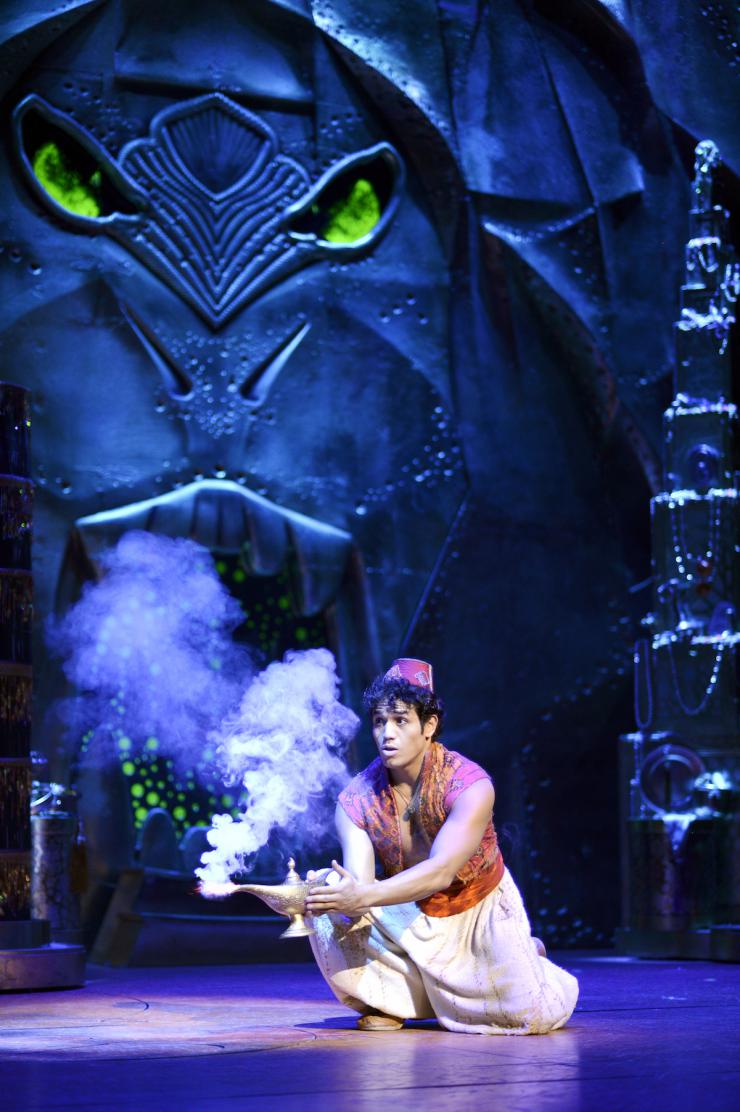
The creators of the Disney musical boast 84 different illusions and effects in Aladdin—many, as I wrote in my review, straight out of the standard playbook for Broadway (stage smoke, confetti) but just as many seemingly new inventions by illusion designer Jim Steinmeyer.
The ensemble members swallow swords….while dancing. Aladdin is persuasively conjured up mid-air amid smoke that has drifted up from the stage. While singing the song “A Whole New World,” Aladdin and Princess Jasmine sit on a flying carpet persuasively floating in mid-air; we are assured there are no wires. They do, though, float amid a backdrop of shimmering stars against a deep black night; this is Broadway after all. (Let me point out that the best special effect that Aladdin has to offer is the performance of James Monroe Iglehart, who plays the genie.)
Rocky
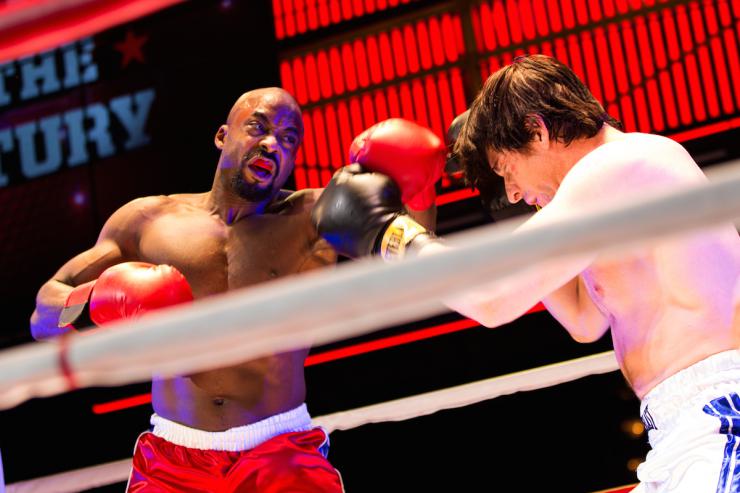
Broadway playbook effects in Rocky include pouring rain, banks of bright lights shining in the audience’s eyes, repeatedly (I stopped counting after the fourth time), automated scenery and video projections. Some of them offer half-hearted simulacrum of the City of Brotherly Love while Rocky is training, but more effective are director Alex Timbers’ modification of an approach to video that he used in directing Here Lies Love, the much-praised David Byrne-Fatboy Slim musical about Imelda Marcos. Actors functioning as videographers presented live video of the actors as politicians simulating press conferences. In Rocky, each time a reporter interviews Rocky or champ Apollo Creed, two huge screens lower onto the stage, so that you see the live actors both on the stage and on the screens.
What may be most impressive about Rocky’s design is the attention to details—the fish in the aquariums of Adrian’s pet store look real, as do the huge slabs of beef carcasses that lower from the rafters.
But by far the most memorable aspect of the production occurs in the last twenty minutes, when those seated up front (including the winners of the $35-a-ticket lottery) are escorted to bleachers onstage, and told to take all their belongings. Then the boxing ring slides into the center of the theater—giving people who were in, say, Row J, ringside seats. Dismiss it as a theme park maneuver if you want; it’s fun, and the epitome of The Broadway Effect.
Les Miserables
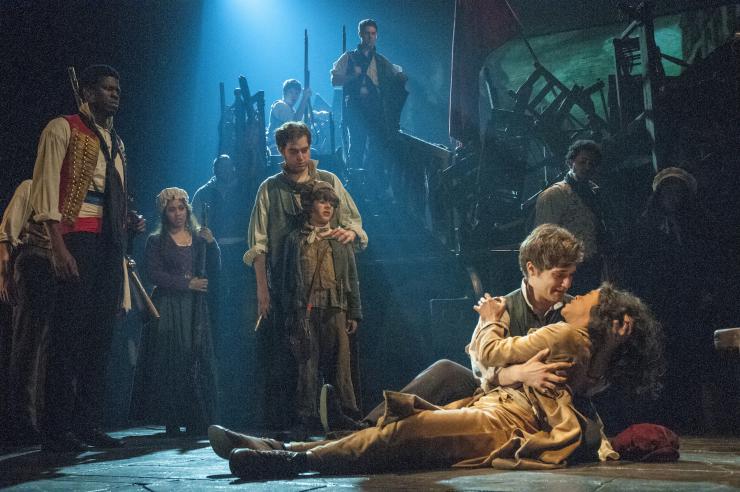
The new Les Miserables on Broadway has stage fog up the wazoo, and weather, and automated scenery, and video projections (most memorably of the Parisian sewer). But what may be most striking about this third Broadway production is how it uses design elements to counter the perception that the sung-through show based on Victor Hugo’s novel is overwrought and bombastic. The huge turntable that was the central scenic element in the past productions is gone; bright lights are not flashed in the audience’s faces; indeed, the lighting is dim, presented in most scenes as dusty beams, which give a painterly feel to the stage, helped along by set designer Matt Kinley’s use of Hugo’s own sketches to create painted backdrops. The result is not, as I wrote in my review, what you can call low key. But it offers hope that in productions to come, The Broadway Effect won’t just be blowing smoke.

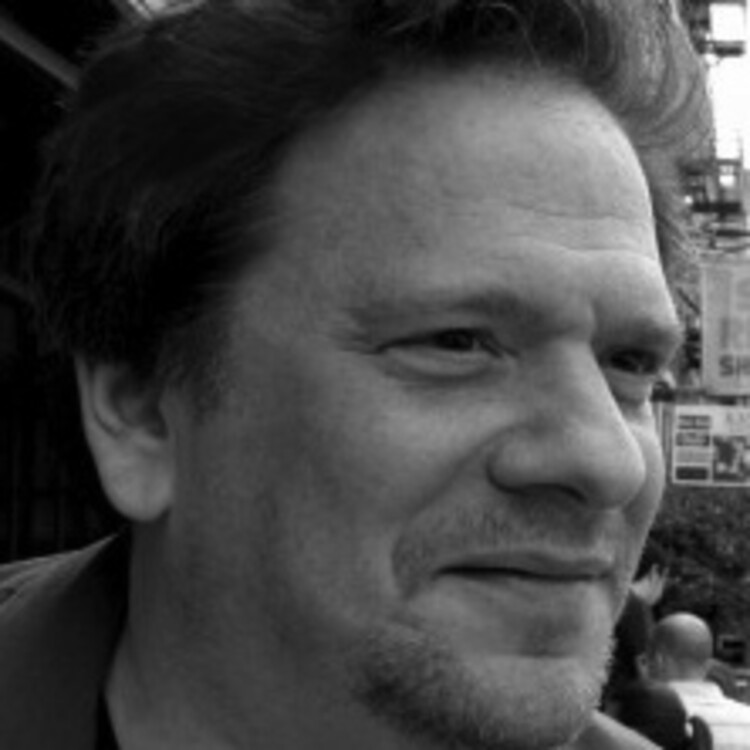
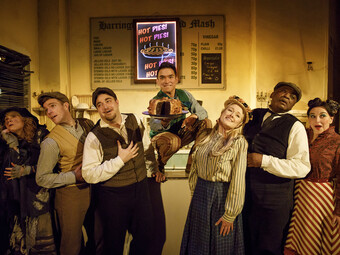

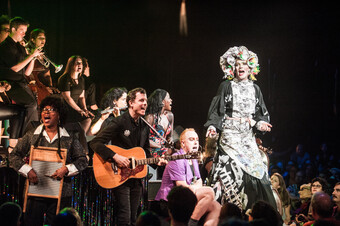

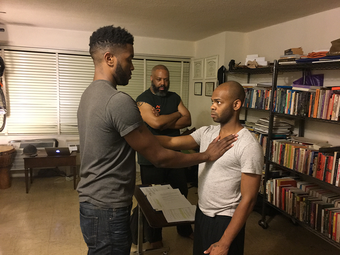

Comments
The article is just the start of the conversation—we want to know what you think about this subject, too! HowlRound is a space for knowledge-sharing, and we welcome spirited, thoughtful, and on-topic dialogue. Find our full comments policy here